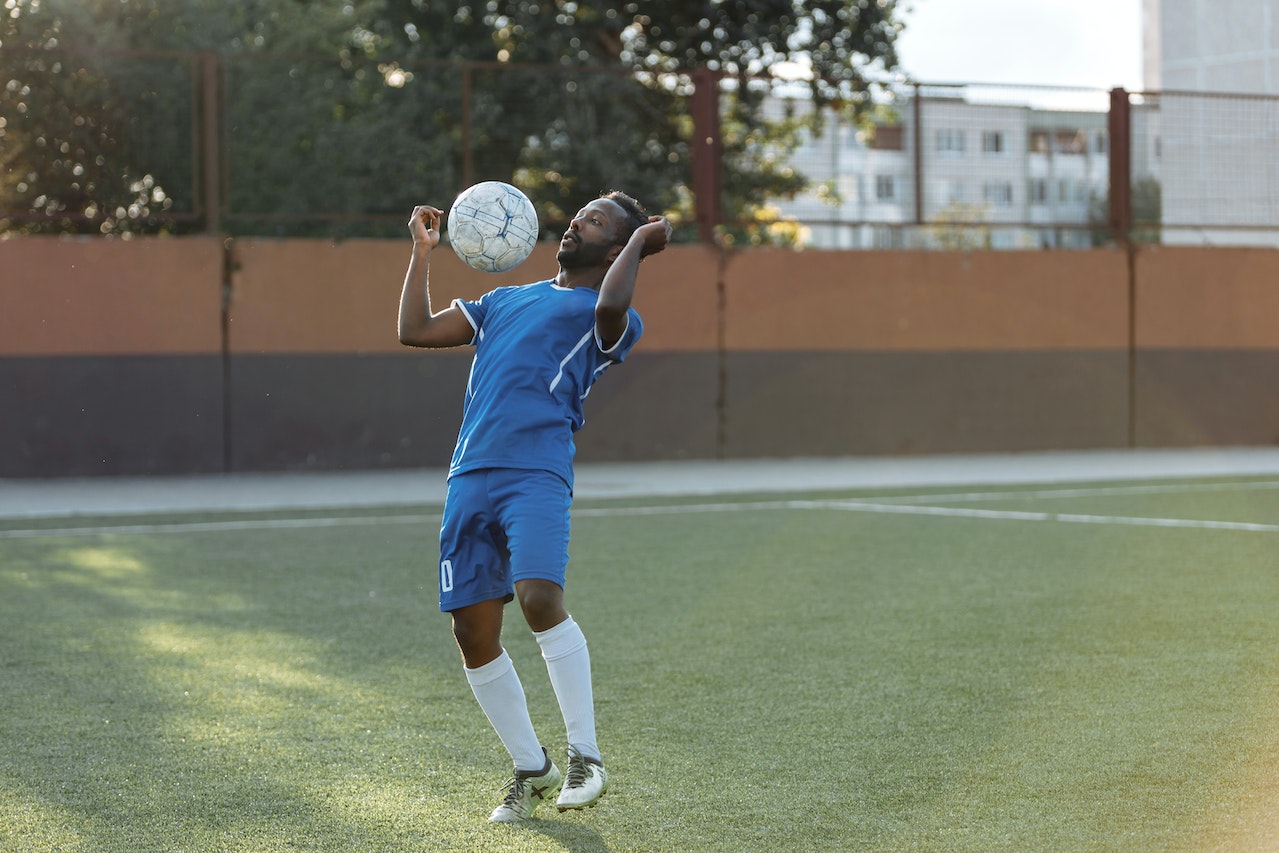How Many Players On A Soccer Team?
Soccer, also known as football, is a popular sport that is played in countries all around the world. One of the most important aspects of soccer is the number of players on each team. Understanding this aspect is critical to playing or even watching the sport. Knowing how many players on a soccer team is crucial in determining the formation and strategy to be employed during a match.
Author:Gabriel MartinezMay 29, 2023157 Shares156.9K Views

Soccer, also known as football, is a popular sportthat is played in countries all around the world. One of the most important aspects of socceris the number of playerson each team. Understanding this aspect is critical to playing or even watching the sport.
Knowing how many players on a soccer teamis crucial in determining the formation and strategy to be employed during a match. In general, a soccer team consists of eleven players, but variations exist in certain formats of the game. Read on to learn in detail.
How Many Players Are On A Soccer Team?
The number of players on a soccer team varies depending on the competition or league. However, the standard number of players on a soccer team is 11.
This includes one goalkeeper and ten outfield players. The goalkeeper is the only player who is allowed to use their hands within the penalty area. The outfield players are not allowed to use their hands and must use their feet or other parts of their body to control the ball.
How Many Players Are On A Soccer Team Including Substitutes?
In most competitions, including professional leagues and international tournaments, a team can have up to seven substitutes on the bench. However, only three of these substitutes can be used during the game. If a player is substituted, they cannot return to the game. Therefore, the total number of players on a soccer team, including substitutes, is 18.
How Many Soccer Players On Field?
The typical number of players that are allowed on a soccer field during a match is eleven. These eleven players consist of one goalkeeper and ten outfield players. The goalkeeper is the only player on the field who is allowed to use their hands, and they typically wear a different colored jersey from the rest of their team.
The ten outfield players are positioned in various locations on the field depending on the team's formation and tactics. The positions include defenders, midfielders, and forwards, and each player has specific roles and responsibilities.
The defenders are usually positioned closer to their own goal to protect it, while midfielders are responsible for controlling the ball and creating attacking opportunities. Forwards are positioned closer to the opposition's goal to try and score goals.
The number of players on the field can change depending on the level of competition or the specific rules of the game. For example, in youth leagues or smaller fields, there may be fewer players on each team. Additionally, some variations of the sport, such as futsal, are played with a smaller number of players on the field. Nonetheless, the standard number of players in soccer is 11.
How Many Positions Are In Soccer?
While the number of positions in soccer can vary depending on the team's formation and tactics, the most common number of positions is eleven, which corresponds to the number of players on the field. These eleven positions are typically divided into three categories: defenders, midfielders, and forwards.
Defenders are responsible for protecting the team's goal and preventing the opposition from scoring. The number of defenders can vary depending on the team's formation, but it usually ranges from two to four. The defenders' primary responsibility is to stop the opposing team's attacks and to clear the ball away from the danger area.
Midfielders play a crucial role in the team's success by linking the defense and the attack. They are responsible for controlling the ball, dictating the pace of the game, and creating scoring opportunities. The number of midfielders can also vary depending on the team's formation, but it typically ranges from three to five.
Forwards, also known as strikers, are responsible for scoring goals. They are usually positioned closer to the opposition's goal and are expected to be fast, agile, and skilled at dribbling and shooting. The number of forwards can vary depending on the team's formation, but it typically ranges from one to three.
In addition to these three categories, some teams may use specialized positions such as a holding midfielder, a winger, or a trequartista. However, the basic division of soccer positions into defenders, midfielders, and forwards remains the most common and widely recognized.
What Are The Eleven Positions In Soccer?
The eleven positions in soccer are as follows:
- Goalkeeper - The goalkeeper is the last line of defense for the team. They are the only player who is allowed to use their hands within the penalty area.
- Center Back - The center back is responsible for stopping the opposing team's forwards and clearing the ball away from their own goal.
- Full Back - The full back plays on the right or left side of the defense. They are responsible for stopping the opposing team's wingers and providing support to the midfield.
- Wing Back - The wing back is similar to the full back but plays further up the field. They are responsible for both defending and attacking.
- Defensive Midfielder - The defensive midfielder plays in front of the defense and is responsible for stopping the opposing team's attacks.
- Central Midfielder - The central midfielder plays in the middle of the field and is responsible for controlling the game and distributing the ball to their teammates.
- Attacking Midfielder - The attacking midfielder plays behind the forwards and is responsible for creating chances and scoring goals.
- Winger - The winger plays on the right or left side of the midfield and is responsible for providing crosses into the box and creating chances.
- Striker - The striker is the team's main goal scorer and plays at the front of the attack.
- Second Striker - The second striker plays behind the main striker and is responsible for creating chances and scoring goals.
- False Nine - The false nine is a relatively new position in soccer. This player is a hybrid between a striker and an attacking midfielder and is responsible for creating chances and scoring goals.
How Many Players Are On A Soccer Bench?
The number of players allowed on a soccer bench, also known as the substitutes' bench or the reserves' bench, can vary depending on the competition, league, or rules of the specific game. However, most professional leagues and tournaments worldwide allow a maximum of seven players on the bench.
Of these seven players, three can be used as substitutes during the game. A substitution occurs when a player is replaced by another player from the bench. The reasons for a substitution can vary, such as tactical changes, injury, fatigue, or disciplinary reasons.
It's important to note that some competitions or leagues may allow fewer players on the bench. For example, youth leagues or lower-level competitions may only allow up to three or five players on the bench.
Additionally, some competitions may have specific rules regarding substitutions, such as limiting the number of substitutions or only allowing substitutions during specific times of the game.
How To Prepare Your Body For The Demands Of The Sport?
Soccer is a physically demanding sport that requires players to have high levels of endurance, strength, speed, and agility. To perform at their best on the field, soccer playersmust prepare their bodies properly for the demands of the sport.
The first step in preparing for soccer is to establish a consistent fitness routine. This includes cardiovascular exercise to build endurance, strength training to build muscle and prevent injury, and agility drills to improve coordination and reaction time. Soccer playersshould aim to incorporate a combination of these exercisesinto their training regimen on a regular basis.
Another important aspect of preparing for soccer is to focus on proper nutrition. Soccer playersneed to consume a balanced diet that includes carbohydrates, protein, and healthy fats to fuel their bodies and support muscle growth and recovery. Hydration is also critical, as players need to replenish fluids lost through sweat during intense training sessions and matches.
To prevent injuries and keep the body in optimal condition, soccer playersshould also incorporate stretching and flexibility exercises into their routine. This can include dynamic stretching before workouts and matches, as well as static stretching and foam rolling to improve range of motion and prevent muscle soreness.
Finally, it's important for soccer playersto prioritize rest and recovery. This includes getting enough sleep each night, taking rest days as needed, and incorporating techniques like massage and ice baths to aid in muscle recovery.
People Also Ask
What Is The Maximum Number Of Yellow Cards Player Can Receive? FAQ
Two yellow cards result in a red card and a player's ejection from the game.
What Causes A Player To Get A Yellow Card? FAQ
A yellow card is given to a player for minor infractions such as unsporting behavior, time-wasting, and dissent.
How Do Soccer Leagues Determine Team Rankings?
Rankings are based on a point system, with teams awarded points for wins, draws, and losses.
How Can Soccer Players Avoid Cramping During Games?
Staying hydrated and properly stretching before games can help prevent cramping.
Conclusion
The number of players on a soccer team is 11, including one goalkeeper and ten outfield players. A team can have up to seven substitutes on the bench, but only three can be used during the game.
The standard number of players on the field is 11, and there are eleven positions in soccer, including the goalkeeper, center back, full back, wing back, defensive midfielder, central midfielder, attacking midfielder, winger, striker, second striker, and false nine.
It's important to know the answer to the question "how many players on a soccer team" and the various positions in soccer in order to understand the sport, whether you're playing or watching.
Jump to
How Many Players Are On A Soccer Team?
How Many Players Are On A Soccer Team Including Substitutes?
How Many Soccer Players On Field?
How Many Positions Are In Soccer?
What Are The Eleven Positions In Soccer?
How Many Players Are On A Soccer Bench?
How To Prepare Your Body For The Demands Of The Sport?
People Also Ask
Conclusion

Gabriel Martinez
Author
Gabriel Martinez is a respected author at Tennessee Independent, renowned for his expertise in covering News and Sports topics. With a comprehensive understanding of current events and a knack for delivering accurate and engaging content, Gabriel provides readers with insightful analysis and compelling narratives. His dedication to factual accuracy and commitment to delivering authoritative content make him a trusted source for news and sports enthusiasts on Tennessee Independent.
Latest Articles
Popular Articles
